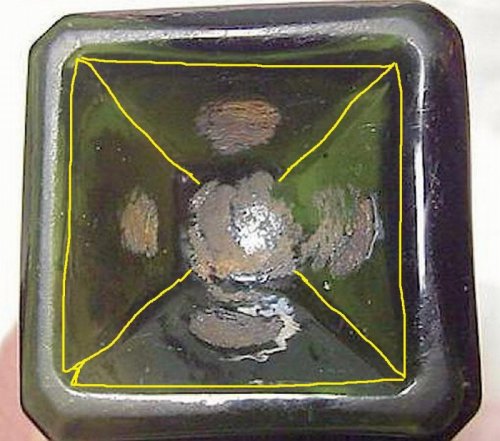epackage
Well-Known Member
Matt or Jeff can you tell me how such a rod would have made these 4 distinct angles creating 4 seperate panels on the bottom, I'm just not grasping what it would have looked like to you? I'm just thinking if it were round how did these panels get so defined instead opposed to the whole base just pushing up as on a typical pontil, didn't something have to define those angled panels? Thanks my friend...ORIGINAL: AntiqueMeds
It must have been slightly conical to hit the center and the sides. I cant imagine they would take the time to exactly line up a four lobed pontil device. That doesnt seen consistent with fast mass production. Time wasted is money lost.


